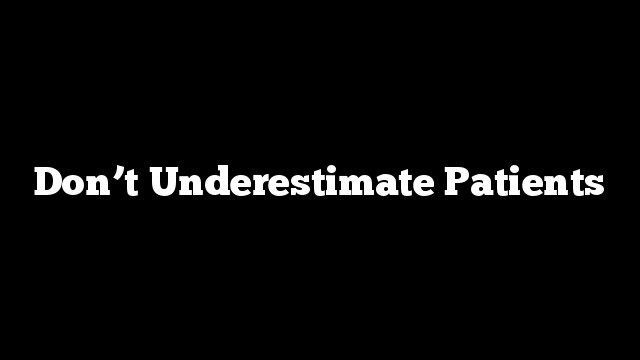I was diagnosed with aggressive but localized prostate cancer at a major Dutch academic hospital. My parameters were PSA 29 or 31, Gleason sum 4 + 4, and stage T2c. Fortunately, there were no detectable distant metastases. The specialist drew a simple image of my urinary tract and told me I was excluded from brachytherapy, which I had never heard of before, because of the size of my prostate. I had to choose between external beam radiotherapy (EBRT) and radical prostatectomy (RP). How on Earth could I choose rationally while knowing so little about prostate cancer? However, I had studied maths and physics and could learn necessary medical science about my condition.
The Dutch healthcare system was privatized in 2006 by a special arrangement between the Health Ministry and the private insurers. This was the first healthcare privatisation in the European Union (EU). The effect of privatisation was, in my opinion, mixed. By the time I was diagnosed I already had much to distrust about the privatisation.
I sought a second opinion in Uppsala Sweden, where I had spent a lot of time as an academic visitor. Its Akademiska Sjukhuset (The Academic Hospital) has an excellent oncology division. I consulted two specialists.
They offered me a treatment that would solve the prostate size problem while being more effective than EBRT or RP alone. The treatment was by then world – class and in use in Norway and America. It is a trimodal technique involving EBRT, High Dose Rate Brachytherapy, androgen deprivation therapy (ADT) before radiotherapy (to make prostate smaller), and ADT during and three years after radiotherapy. The plan would be finalised later. I enjoyed the discussion so much that I decided to move permanently to Uppsala, and I started the treatment.
When I returned to the Netherlands to prepare to move, I ran into the doctor. Using my firm teacher’s voice I asked him why he had rejected me for brachytherapy. I did not tell him I had been in Uppsala. He kept referring to his Guideline but told me nothing else.
I found the guideline titled, ‘Guideline Prostate Carcinoma: Diagnostics And Treatment.’ The guideline made no allowance for my individual predicament.
For example, it stated that most studies of brachytherapy excluded Gleason sum > 6. Mine was 8. That is, according to this guideline the population for which brachytherapy was considered suitable or unsuitable did not include someone like me.
The guideline said nothing about using ADT to shrink the size of the prostate – again this is a nuanced consideration about applying the guideline to individual cases. Why did the doctor not think nuance? Are we paying doctors for following guidelines or applying nuance?
The guideline said, “There is insufficient evidence that combining EBRT and brachytherapy for patients with localised cases yields better results [than either alone], at least for low and intermediate risk patients, while the morbidity [toxicity] seems to increase.”
My prostate cancer is high, not low or intermediate, risk. The guideline writers are worried about toxicity. I’m worried about death. How about asking me if I’m willing to take chances with “toxicity”? I did not want a prostatectomy but I did not want to be undertreated. Should I not have been asked how I felt about side – effects?
Why should doctors decide on a treatment plan without involving patients in discussions as to what they find an acceptable post treatment quality of life? This is done with prostate cancer issues like sexual potency and incontinence, which very many men know about. Why not others, e.g. radiation induced cystitis of bladder (me) and stricture? I fail to see any difference.
The age cut-off of the Dutch guideline for prostate cancer is 65. Yes, you heard right – 65! They were laughing about this in Uppsala.
My case raises a moral problem. Should doctors inform patients about where they can get the most effective treatments, at home or abroad? I was not, yet I did know about free international travel of EU citizens within the Union. Treaties exist concerning medical care of residents of EU country X in EU country Y. They are bilateral agreements. They ought to be used to help save lives.
State and private insurers should set up procedures to send patients abroad. Some are now, but I am convinced that this should be routine and unproblematic. Yet when I asked one of my Dutch doctors about care of prostate cancer in other countries a few days before I left, he replied, ‘we have our own ideas here.’ He did not know about my visit to Uppsala. He imposed his parochial ideas about quality of life on me. So the Dutch medical authorities chose probable death in The Netherlands over probable survival in Uppsala, albeit with reduced quality of life. How was this decided? By some local ethical and/or religious ideas? By cool financial analysis? By arrangements with insurers? Is following Guidelines more important than curing patients?
The choice was mine to make. I believe, were it not for my own initiative and inquiry, I’d have died prematurely from undertreatment.
About the author:
George Berger PhD is a philosopher of science. He lives in Uppsala Sweden. He’s a member of Disabled People Against Cuts, a large independent British group fighting benefit polices concerning ill and disabled people that have harmed many.
